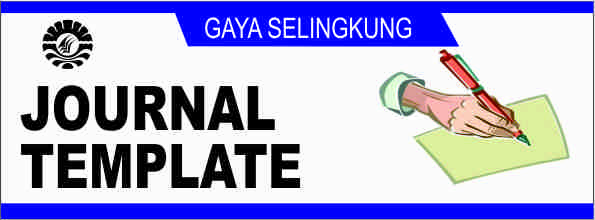Civil Servant Performance Development Policy in the Regional Government of Bone Regency
(1) Sekolah Tinggi Ilmu Administrasi Puangrimaggalatung
(2) Sekolah Tinggi Ilmu Administrasi Puangrimaggalatung
(3) Sekolah Tinggi Ilmu Administrasi Puangrimaggalatung
(4) Sekolah Tinggi Ilmu Administrasi Puangrimaggalatung
(5) Sekolah Tinggi Ilmu Administrasi Puangrimaggalatung
(6) Sekolah Tinggi Ilmu Administrasi Puangrimaggalatung
(*) Corresponding Author
DOI: https://doi.org/10.26858/jo.v7i2.28119
Abstract
Keywords
Full Text:
PDFReferences
Amstrong, M. (1994). Performance Management. koKogan Page Limited.
Areros, W. A. (2015). Pengaruh Etika Administrasi Terhadap Pengembangan Kualitas Sumber Daya Manusia Pegawai Negeri Sipil (Pada Kantor Kecamatan Pinolosian Kabupaten Bolaang Mongondouw Selatan ). IV(3).
Batjo, N., & Shaleh, M. (2018). Manajemen Sumber Daya Manusia. In Manajemen Sumber Daya Manusia.
Colquitt Jason, A., Lepine, J. A., & Wesson, M. J. (2009). Organizational Behavior. McGarw Hill.
Denison, D. R. (2016). Bringing Organizational Culture and Leadership to the Bottom Line.
Drucker, P. (2001). People And Performance. Butterworth Heneimann.
Elmi. (2018). Manejemen Sumber Daya Manusia. In Mitra Wacana Media. https://doi.org/10.1029/2005JD006157
Krismiyati, K. (2017). Pengembangan Sumber Daya Manusia dalam Meningkatkan Kualitas Pendidikan di SD Negeri Inpres Angkasa Biak. Jurnal Office, 3(1), 43–50.
Malayu, H., & Hasibuan, H. (2012). Manajemen sumber daya manusia, Edisi Revisi. PT Bumi Aksara. Jakarta.
Petianna, S. (2017). Pengelolaan Informasi Publik di Badan Pengembangan Sumber Daya Manusia Daerah (BPSDMD) Provinsi Jawa Tengah. Universitas Diponegoro.
Samad, A., & Jamaluddin, J. (2016). Efektivitas Pengembangan Sumber Daya Pegawai Di Smk Yplp Pgri 1 Makassar. Jurnal Office, 2(2), 195–202.
Schein, E. H. (1992). Organizational Culture and Leadership. Jossey-Bass Publisher.
Simamora, H. (2014). Manajemen Sumber Daya Manusia. In Edisi 2.
Stoner, J. A. F., & Freeman, R. E. (1992). Management. Prentice Hall Inc.
Tarigan, C. G., & Nasution, M. A. (2014). Pengaruh Pengembangan Sumber Daya Manusia Terhadap Kinerja Karyawan Pada PT. PLN Cabang Binjai. Jurnal Ilmu Administrasi Publik, 2(2), 146–153.
Turner, C. H. (1994). Corporate Culture: How to Generate Organizational, Strength and Lasting Commercial Advantage. Judy Piatkus.
Article Metrics
Abstract view : 132 times | PDF view : 17 timesRefbacks
- There are currently no refbacks.
Copyright (c) 2021 Hasnawati Hasnawati, A Indrawati, Zainuddin Zainuddin, Muslim Muslim, Mohamad Pahrun, M Awaluddin

This work is licensed under a Creative Commons Attribution 4.0 International License.






























 under a
under a